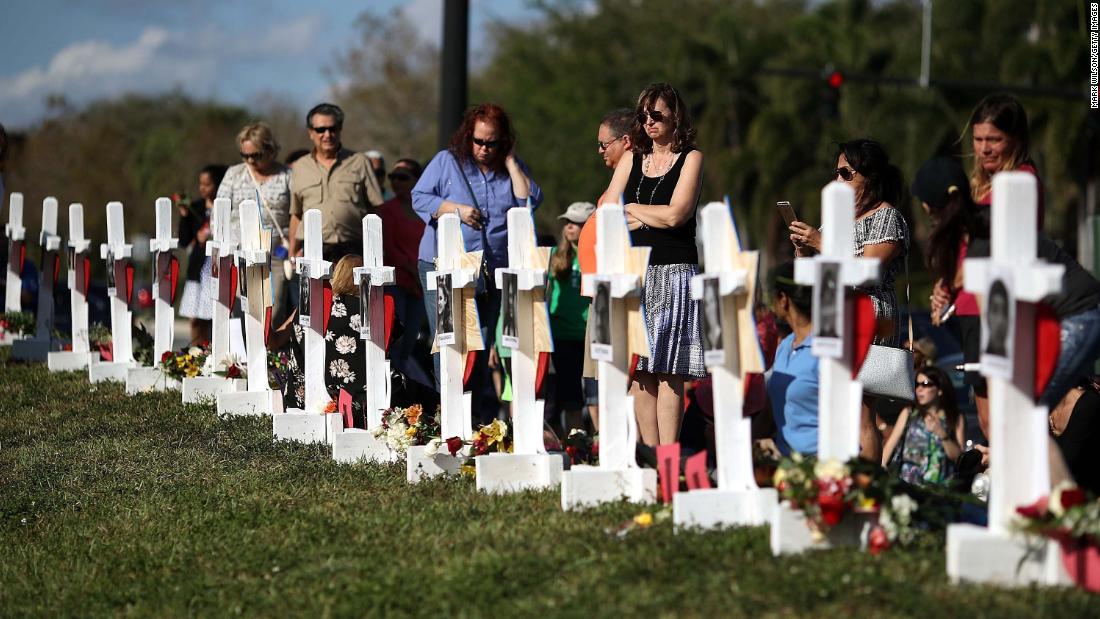
Here’s why the Parkland shooter is facing a jury even though he has already pleaded guilty


Cruz has already pleaded guilty to 17 counts of murder and 17 counts of attempted murder for the massacre at Marjory Stoneman Douglas High School. The jury now being impaneled will be tasked with helping decide his fate.
Selecting the jury is expected to be a lengthy process that could last through May, according to discussions between the judge, the state and the defense in pretrial hearings. Once the jury is seated, the trial could last between 4 and 6 months.
Here we’re going to break down the penalty phase of Cruz’s case — what it is and what it might look like, as well as the possible outcomes and the jury’s role.
The penalty phase
Every jurisdiction that still has capital punishment divides death penalty cases into two separate phases: the “guilt” phase and the “penalty,” or “sentencing,” phase.

In the guilt phase, a defendant is deemed innocent or guilty. This is done either by a jury or by a defendant pleading guilty, as Cruz did last October.
Once a determination of guilt has been made, the trial moves to the penalty phase, in which the court reviews the case and the defendant’s history to decide whether he or she deserves death or a lesser sentence like life in prison.
This process is a “virtual constitutional necessity,” said Robert Dunham, executive director of the Death Penalty Information Center, thanks to a combination of Supreme Court rulings that, in part, upheld the sentencing guidelines of states that had these bifurcated proceedings.
The goal is to ensure that only the “worst of the worst” are executed for their crimes, said Teresa Reid, legal skills professor at the University of Florida’s Levin College of Law.
“The old adage that is quoted is, death is different,” she said, pointing to the finality of a death sentence. “There’s no appeal from that final act of execution.”
Aggravating factors vs. mitigating circumstances
During the sentencing phase, the court will generally hear reasons why the defendant should or should not be put to death. These are known as aggravating factors and mitigating circumstances, respectively.
Prosecutors will present the aggravating factors, which Dunham described as facts of the case that make the defendant “death-eligible.” Florida’s statute lists at least 16 such factors, among them:
- Whether the defendant was previously convicted of a felony
- Whether the defendant “knowingly created a great risk of death to many persons”
- Whether the capital crime was committed while the defendant was in the commission of another felony, like robbery or kidnapping
- Whether the victim was under 12 years old, a law enforcement officer or an elected or appointed official performing official duties

Defendants, however, have a chance to present mitigating circumstances; that is, anything that might convince the court he or she does not deserve death. These factors — many of which are irrelevant to the question of guilt or innocence — would be seen as “not enough to excuse the crime,” Dunham said, “but enough to call for leniency.”
In Florida’s statute, mitigating circumstances include:
- Whether the defendant has no significant criminal history
- Whether the defendant was severely mentally or emotionally disturbed at the time of the crime
- The defendant acted under extreme duress or the “substantial domination” of another person
- The defendant did not have the capacity to appreciate the criminal nature of his or her conduct
In Florida, however, where the statute also allows for the presentation of the “existence of any other factors in the defendant’s background that would mitigate against imposition of the death penalty,” the defendant can go far beyond that.
“That’s why this trial could take a long time, this phase could take a long time,” Reid said, adding she knew of a case where a defendant’s first grade teacher was brought in as a mitigating witness. “When the law allows for the existence of any other factors in the defendants’ background, you can imagine what could be brought in.”
Survivors and members of the victims’ families are also expected to provide victim impact statements, sharing with the court how the defendants’ actions have affected them. This gives the victims the chance to be heard, Reid said, and finally have their day in court.
“What if your loved one was gunned down? Four years is nothing,” Reid said, referring to the time that has elapsed since the shooting. “And you haven’t had a chance to face the person and the decision makers and say what an incredible loss (you’ve suffered).”
“We don’t have a system where it’s the victims’ families that get to decide whether you live or die if you kill their family members. We don’t have revenge,” she said. “And so this is the mechanism that the family has.”
The jury’s role
Once aggravating and mitigating circumstances have been heard, the jury or judge, whoever is responsible for sentencing, will weigh the aggravating and mitigating circumstances to determine the sentence.
In Cruz’s case, the jury must be unanimous in finding beyond a reasonable doubt that at least one aggravating factor exists. If that happens, jurors must then be unanimous in recommending the defendant be put to death, or his sentence would default to life in prison without the possibility of parole. If they recommend death, the judge could choose to follow that recommendation or sentence Cruz to life instead.

Generally, the jury represents “the conscience of the community,” said Dunham, and by participating, it can reflect the feelings of the wider community where the crime occurred and where the defendant is being tried.
At the same time, for states like Florida where a judge makes the final decision on capital punishment, a judge can act as a “backstop,” Dunham said, in case the conscience of the community is overborne by “impermissible factors” like racism, for example.
Choosing a jury in a capital case can be hard due to potential jurors’ views on capital punishment: A jury seated in a death penalty case must be willing to impose the death penalty. But they also need to be willing to weigh the mitigating circumstances, said Dunham, and consider the lesser sentence.
“You don’t want jurors who are substantially impaired in their ability to follow the law,” Dunham said. That means “they must be willing to honestly consider the aggravating circumstances and give them some weight as a reason to take the defendant’s life,” he said, “and they (also) must be willing to consider the mitigating circumstances and give them some weight as a reason to spare the defendant’s life.”
Source: https://www.cnn.com/2022/04/10/us/nikolas-cruz-penalty-phase-explainer/index.html

















